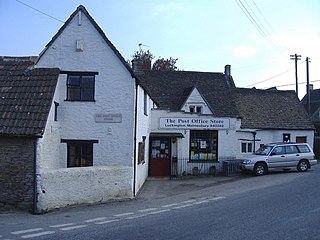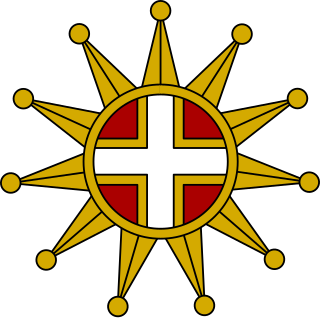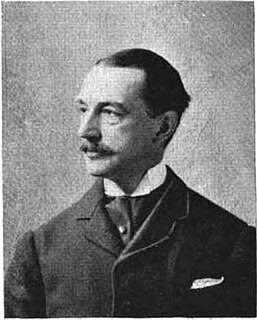Related Research Articles

I Corps was an army corps in existence as an active formation in the British Army for most of the 80 years from its creation in the First World War until the end of the Cold War, longer than any other corps. It had a short-lived precursor during the Waterloo Campaign.

IV Corps was a corps-sized formation of the British Army, formed in both the First World War and the Second World War. During the First World War the corps served on the Western Front throughout its existence. During the Second World War it served in Norway and Britain until, after Japan entered the war and India was threatened with attack, it was transferred there.

The 1st Division, formerly known as the 1st Armoured Division, is a division of the British Army. It has recently returned home from being stationed in Germany. Originally formed in November 1937 as the Mobile Division, it saw extensive service during the Second World War and was disbanded afterwards; reconstituted in 1976, it remains in service. It should not be confused with the 1st Infantry Division.

The II Corps was an army corps of the British Army formed in both the First World War and the Second World War. There had also been a short-lived II Corps during the Waterloo Campaign.

III Corps was an army corps of the British Army formed in both the First World War and the Second World War.

VII Corps was an army corps of the British Army active in the First and Second World Wars. In the early part of the Second World War it was part of the defence forces of the United Kingdom, and later acted as a shadow formation for deception purposes.

Luckington is a village and civil parish in the southern Cotswolds, in north-west Wiltshire, England, about 6 1⁄2 miles (10 km) west of Malmesbury. The village is on the B4040 road linking Malmesbury and Old Sodbury. The parish is on the county border with Gloucestershire and includes the village of Alderton and the hamlet of Brook End.

I Corps was an Australian Army corps, one of three that were raised by the Army during World War II. It was the main Australian operational corps for much of the war. Various Australian and other Allied divisions came under its control at different times. In 1940–1942, the corps was based in the Mediterranean and Middle Eastern theatres, and controlled forces in action against the Germans, Italians and later the Vichy French in North Africa, Greece and Syria–Lebanon.

The 66th Infantry Division was an infantry division of the British Army, which was active between September 1939 and June 1940 during the Second World War. In March 1939, after the re-emergence of Germany as a European power and its occupation of Czechoslovakia, the British Army increased the number of divisions within the Territorial Army by duplicating existing units. The 66th Infantry Division was formed in September 1939, as a second-line duplicate of the 42nd Infantry Division. The division's battalions were all raised in the Lancashire and Cumbria area.

The 45th Infantry Division was an infantry division of the British Army, formed just prior to the start of the Second World War. In March 1939, after the re-emergence of Germany as a significant military power and its occupation of Czechoslovakia, the British Army increased the number of divisions in the Territorial Army (TA) by duplicating existing units. The 45th started forming in August 1939 and became active the following month, as a second-line duplicate of the 43rd (Wessex) Infantry Division. The division's battalions were all raised in the West Country.

The 47th (London) Infantry Division was an infantry division of the British Army that was formed during the Second World War and remained in the United Kingdom until the end of the war. In March 1939, after the re-emergence of Germany as a significant military power and its occupation of Czechoslovakia, the British Army increased the number of divisions in the Territorial Army (TA) by duplicating existing units. The 2nd London Division was formed in August 1939 as a second-line duplicate of the 1st London Division; its battalions were all initially London-based.

Kneller Hall is a mansion in Whitton, in the London Borough of Richmond upon Thames. It houses the Royal Military School of Music, training musicians for the British Army, which acquired the building in the mid-19th century. It is also home to the school's Museum of Army Music. The Army is scheduled to vacate the site in 2020.

XII Corps was an army corps of the British Army that fought in the First and Second World Wars. In the First World War, it formed part of the British Salonika Force on the Macedonian front. In the Second World War, it formed part of the British Second Army during Operation Overlord and the subsequent North-West Europe Campaign of 1944-45.

Aldershot Command was a Home Command of the British Army.

XI Corps was a corps-sized formation of the [British Expeditionary Force], active during the Great War that served on the Western Front and in Italy. It was recreated as part of Home Forces defending the United Kingdom during World War II.

Pyrland Hall is a country house near Cheddon Fitzpaine in the English county of Somerset. It is a Grade II* listed building.

Hickleton Hall is a Grade II* listed Georgian stately home in Hickleton, South Yorkshire, England, about 6 miles (10 km) west of Doncaster. For more than 50 years it was a Sue Ryder Care home. It was being converted to luxury apartments, and is now up for sale again.

Commander-in-Chief, Home Forces was a senior officer in the British Army during the First and Second World Wars. The role of the appointment was firstly to oversee the training and equipment of formations in preparation for their deployment overseas, and secondly, to command the forces required to defend the United Kingdom against an enemy incursion or invasion.
The 1st Army Corps was an army corps of the Soviet Armed Forces. It was formed in 1957 and finally deactivated in 1991. It draws its history from the 1st Rifle Corps, formed in 1922. Troops of the 1st Rifle Corps participated in the Winter War and World War II.

Thomas Newbold was an American lawyer, politician, and society leader during the Gilded Age.
References
- 1 2 "Guilsborough House, Guilsborough". British listed buildings. Retrieved 14 February 2016.
- ↑ "Guilsborough". Kelly's Directory of Northamptonshire. 1898. Retrieved 14 February 2016.
- ↑ John Dann (January 2017). Maud Coleno’s Daughter: The Life of Dorothy Hartman, 1898–1957. Troubador. pp. 219–220. ISBN 978-1-78589-971-3.
- ↑ Robert Treeck, The National Archives' reference KV 2/2743
- ↑ Newbold, p. 367
- ↑ "Premises, Sites etc within 30 miles of Harrington Museum used for Military Purposes in the 20th Century" (PDF). Harrington Museum. Archived from the original (PDF) on 4 March 2016. Retrieved 14 February 2016.
- ↑ "No. 41227". The London Gazette . 15 November 1957. p. 6622.
- ↑ "Guilsborough House". National Garden Scheme. Retrieved 14 February 2016.